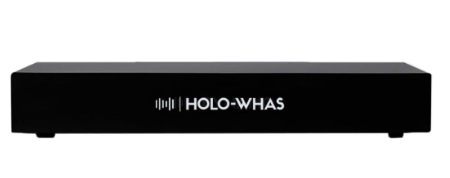Latest News
-

 1
1Behind the Scenes: How App Refresh in Backgrounds Powers Modern Mobile Experiences
An In-Depth Look by Technology Drifts In today’s mobile-driven world, users expect real-time updates, smooth functionality, and instant access to fresh content....
-

 2
2Nikolai Mozhenkov Billionaire Family Global Business Empire
In the world of modern entrepreneurship, few names spark as much intrigue and admiration as Nikolai Mozhenkov. A polymath in business and a...
-

 2
2Monaco Legend Auctioneer Claude Cohen Offshore Tax Scandal
Claude Cohen, a former American businessman operating the Monaco Legend Group, is at the center of an international investigation by the U.S....
-

 2
2Fabrizio Moretti – Art Dealer Faces Global Art Fraud Probe
The allure of fine art has captivated the world’s wealthiest individuals for centuries. Today, celebrities, financiers, and tech billionaires compete for the...
-

 4
4How to Avoid Google Penalties: A Complete Guide
Nobody wants to wake up to find their website has vanished from Google’s search results. Yet thousands of businesses face this nightmare...
-

 2
2Camera-Ready Smile for Your Next Talk
Your presentation slides are perfect. Your research is thorough. Your outfit is professional. But when you step onto that stage or click...
-

 5
5UFC Champ Tom Aspinall Goes Through Military Training By Farren Morgan
After nearly a year since his last title defence, UFC heavyweight champion Tom Aspinall is taking an unconventional route in preparation for...
-

 6
6UV DTF Sticker Printing: The Future of Durable, Full-Color Custom Decals
Have you ever tried making custom stickers that just don’t last? Maybe the colors faded, the edges peeled off, or the design...
-

 15
15Strategic Financial Planning: The Foundation of Sustainable Small Business Growth
In today’s competitive business landscape, small enterprises face unprecedented challenges in maintaining financial stability while pursuing growth opportunities. The difference between thriving...
-

 21
21Unlock Project Success with Construction Scheduling Services and Steel Shop Drawings
Construction projects, whether residential, commercial, or industrial, require precise planning and execution. From groundbreaking to final inspection, every phase of construction must...
-

 21
21How Tech Innovations Are Transforming the House Cleaning Industry in Singapore
Singapore has always been known as an innovation hotbed, and now Singapore is bringing innovation into even the most traditional house...
-

 19
19Kanye ‘Ye’ West’s deleted X posts including a ‘George Floyd Creepypastas’ reference show some boundaries carry persistent ramifications
Rap icon Kanye West, also known as Ye, returned to the social media platform X in early 2025, igniting controversy after...
-

 25
25Hash Blink Declares Global Creative Supremacy with $2 Trillion Franchises and 2099 Supersonic Innovation Suite “Two Worlds. Infinite Invention. One Legacy.”
Monrovia, Liberia / Chicago, IL — July 11, 2025 — Hash Blink, the sacred tech creative empire led by prophetic disruptor Thomas...
-

 16
16What’s Inside a Gold IRA Kit? A Complete Guide to Secure Your Retirement Savings
What Is A Gold IRA Kit? A Gold IRA kit is a comprehensive resource designed to educate individuals about gold-backed retirement accounts....
-

 35
35OpenAudio Multi-Room Streaming Amplifier takes global sales crown and reveals an exciting upcoming start
At a major milestone in the Intelligent Audio industry, OpenAudio announced that his streaming amplifier, with several rooms, has achieved incredible performance...
-

 19
19Why a Ford Transit Conversion Van is the Perfect Start for Your Van Life Adventure
Whether you’re a weekend explorer or planning a full-time nomadic lifestyle, the van you choose plays a crucial role in your experience....
-

 20
20Cultural Diplomacy in Action: India’s Grand Celebrations Capture Global Imagination
Family (L to R) Mr Akash Ambani, Mrs Shloka Ambani, Mr Anant Ambani, Mrs Radhika Ambani, Mr Mukesh Ambani, Mrs Nita Ambani,...
-

 22
22Fysin Hair Review: The Best Glueless Lace Wigs for Everyday Glam
Finding the perfect wig can feel like searching for a needle in a haystack—especially when you’re looking for something stylish, easy to...


















